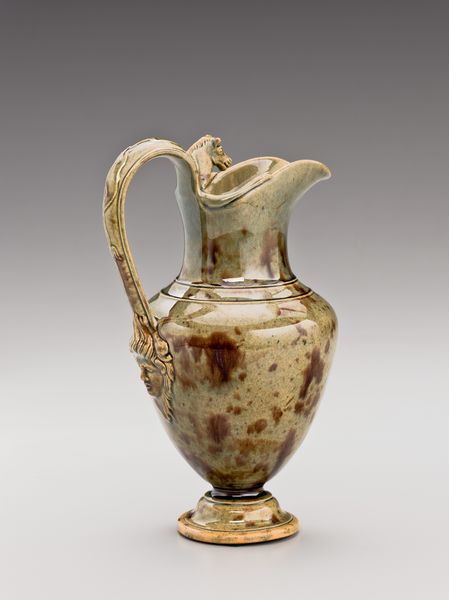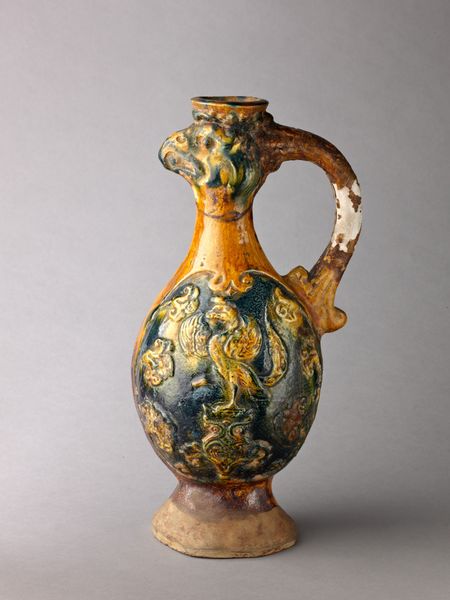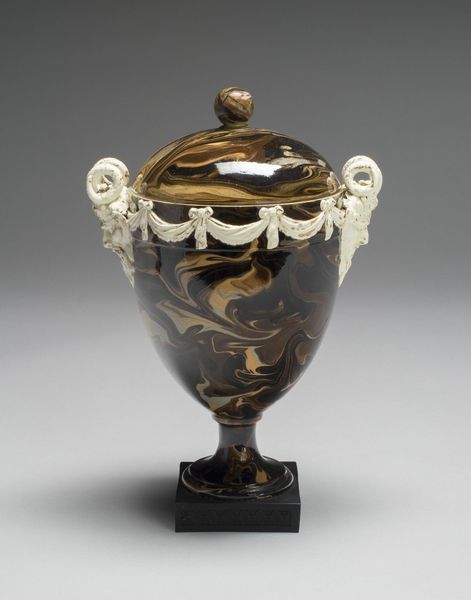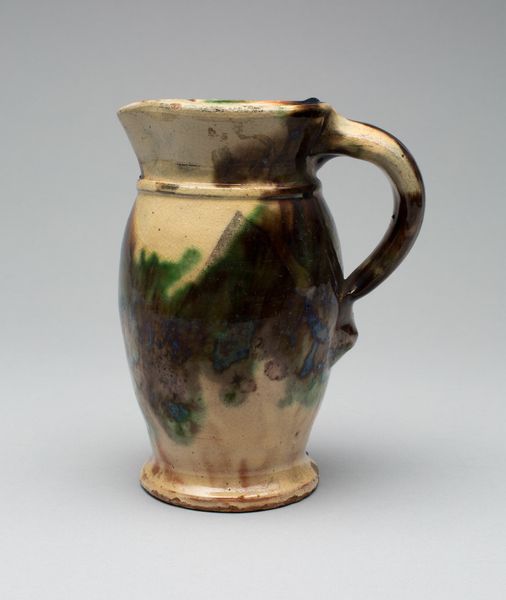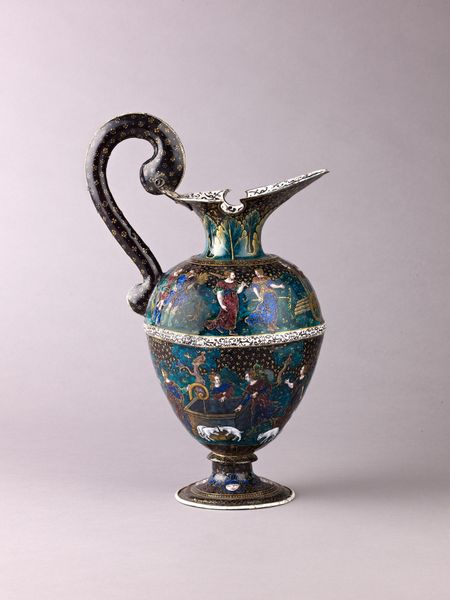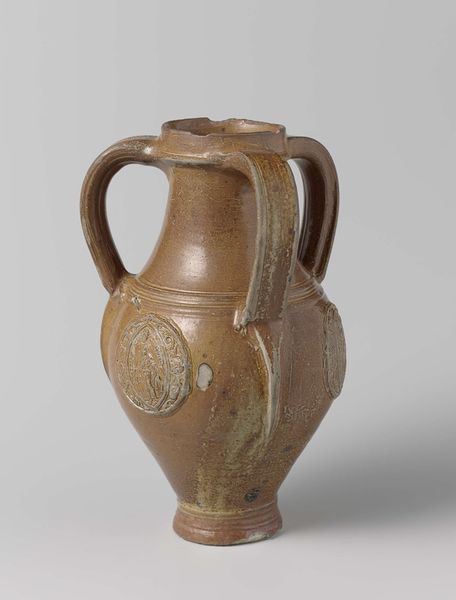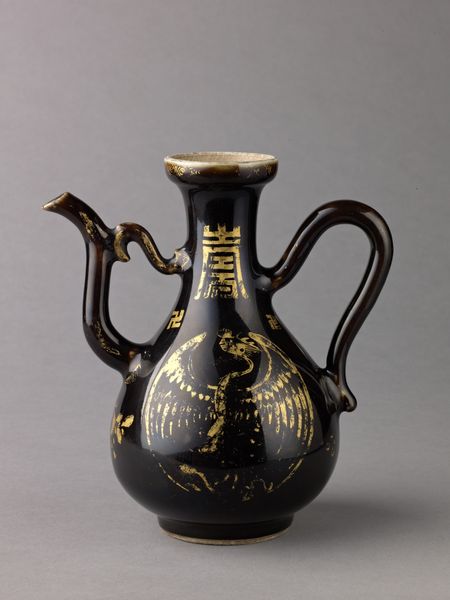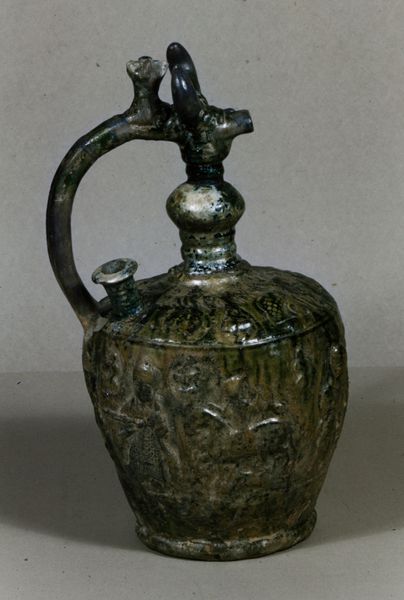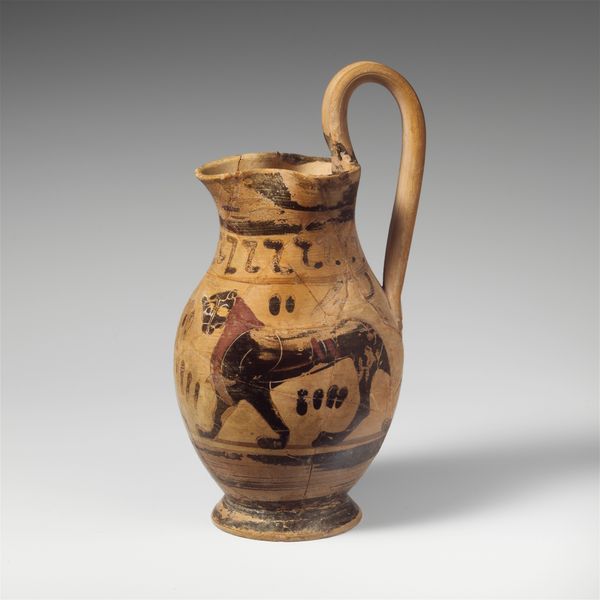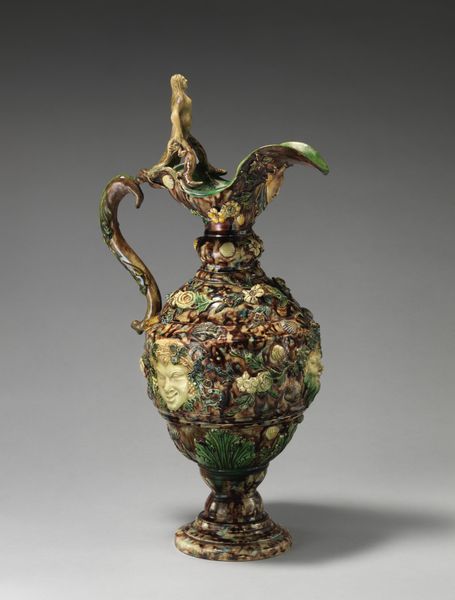
Dimensions: 14 5/16 x 7 3/4 in. (36.4 x 19.7 cm) Base diameter: 8 1/2 in. (8 1/2 in.) Body diameter: 7 3/4 in. (19.7 cm)
Copyright: Public Domain
Editor: This is a stoneware ewer on stand by Chelsea Keramic Art Works, crafted between 1872 and 1883. The muted green glaze, embellished with water lily motifs, gives it an earthy yet elegant feel. How do you interpret this piece through a formal lens? Curator: Intriguing. The first aspect that captures my attention is the interplay between organic form and functional design. Note the careful distribution of the water lily reliefs—how they are not merely applied but seem to emerge from the body of the ewer, influencing the object's contours. Observe also the sinuous curve of the handle, echoed in the flow of the lily stems, thus creating a unified visual language. Editor: I see what you mean about the unity. Do you think the restricted color palette also contributes? Curator: Precisely. The subtle gradation within the green and brown glazes enhances the tactile quality and draws attention to the meticulous craftsmanship. The absence of strong chromatic contrasts serves to emphasize the relief work, urging the viewer to perceive form through texture. Editor: It's like the design wants us to focus on the three-dimensionality of the object, not just its color. I was initially drawn to the overall aesthetic, but looking closer at the relationships between the color, shapes, and texture, I see an object filled with intention. Curator: Precisely. Formal analysis allows us to move beyond superficial appreciation and into a deeper understanding of the artist’s choices, and how those choices come together to create meaning. A valuable exercise indeed.
Comments
No comments
Be the first to comment and join the conversation on the ultimate creative platform.
